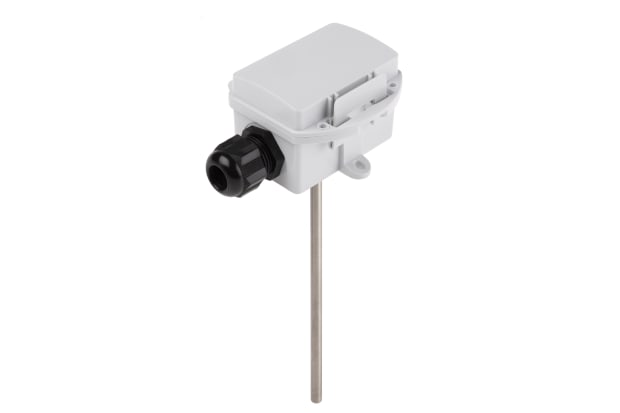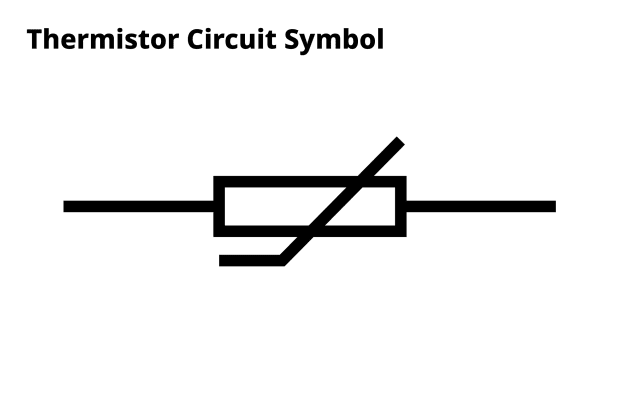- Published 12 Jun 2023
- Last Modified 29 Aug 2023
- 6 min
What is a Thermistor?
Essential to the regulation of current in devices that change temperature, thermistors are everywhere in industrial appliances.

What are thermistors? What are they used for? From the basics and common questions about these vital electronic components to the detail of how they work, join us as we take a deep dive into thermistors.
A thermistor is an electronic component that changes the resistance in its circuit as the temperature it is sensing goes up or down. Its name comes from thermal (pertaining to heat) and resistor (a standard electronic component that limits current flow).
Types of Thermistors
There are two main types of thermistors - negative temperature coefficient (NTC) and positive temperature coefficient (PTC).
What is an NTC Thermistor?
With NTCs, a higher temperature means less thermistor resistance and a lower temperature means more resistance. NTCs are by far the most common type of thermistor.
What is a PTC Thermistor?
PTCs have the opposite effect – a higher temperature will result in a higher resistance, and a lower temperature will mean lower resistance.

Choosing the Right Thermistor is Vital
It’s clearly important to choose the right type. Whether it is being used in refrigeration, ambient temperature control or in a heating application, the resistance will often be used to automatically control some sort of temperature regulating device. In the absence of other failsafe measures, the wrong type could set a catastrophic chain of events in motion as the loop tries to correct itself in the wrong direction, for example continually adding heat when it should be cooling.
Thermistor vs Thermostat, Thermometer and Thermocouple
There are several devices with similar names to the thermistor, but they have different applications.
A thermostat uses temperature to trigger an on/off switch in a circuit, so it’s a binary device. Most homes have one to switch on central heating when the temperature falls below a certain level and switch it off again when the room is at the desired temperature. A thermistor is a much more finessed device, as it operates on a sliding scale, not a simple on/off system. In essence, with a thermostat, the temperature is constantly fluctuating as the device tells the heat source to switch on and off, whereas with a thermistor, it can constantly feed information back to the device that controls temperature, so a much more stable temperature can be achieved.
A thermometer is any device that measures temperature and displays it in some sort of readable form, which could be mercury in a tube, a needle, an LCD display, or a digital signal sent to a remote computer, for example. A thermistor has no moving parts and no display, and simply raises or lowers resistance in a circuit unconnected to the device being measured.
A thermocouple is a very accurate type of thermometer, specifically one using prongs of two different metals that produce a voltage at the point where they meet. As the voltage is dependent on the temperature difference, it can be used to calculate the temperature. Thermocouples (and other types of thermometers) can be engineered to have their readout interpreted by a computer or physical device, and can thus be used to control valves, pumps or indeed electrical resistance in a feedback loop.
How Do Thermistors Work?
Since dissimilar electrically conducting materials have differing resistances at different temperatures, the thermistor is a relatively simple device in physical terms. As the bead of the thermistor gets warmer or cooler, the current flowing through its circuit is impeded in line with the variable resistance. Now, it’s a case of measuring the current, which will be reduced as resistance increases, and since the original current is known, the difference can be used to measure temperature.
The complicated part is choosing which materials to use, as they all react to temperature in their own ways. That’s good because it means manufacturers can create a range of thermistors to act over different temperature ranges. It also means that NTCs and PTCs can be created, as they react to heat in opposite ways.
What are Thermistors Made of?
NTC thermistors are made from oxides of metals, typically chromium, manganese, cobalt, iron or nickel. PTCs use titanium compounds, usually with barium, strontium or lead. These compounds are then usually encapsulated in an epoxy or glass layer for protection and consistency.
What Does a Thermistor Do in a Circuit?
In terms of a circuit, the thermistor is essentially a variable resistor that is automatically controlled by temperature, rather than a knob or slider.

What is the Symbol for a Thermistor?
This is the thermistor circuit symbol.
The thermistor symbol used will depend on the type – note the subtle difference between NTC and PTC, indicated by the + or – before t°.
What are Thermistors Used for?
Thermistors are used whenever the temperature is important, which means they can be installed in food preparation equipment, chemical manufacturing processes, engineering applications, refrigeration devices and a host of other places. They might simply give a temperature readout to allow people to monitor and act upon temperature changes. Alternatively, they can be part of automated control systems, that is, where the measured temperature activates cooling or heating via computer or electronic control of valves, pumps, inlets, flow rates and so on.
How to Calibrate a Thermistor
Thermistors are calibrated by placing them alongside pre-calibrated temperature sensors in a controlled environment (an enclosed, insulated, fluid filled-tank or gas-filled chamber is best), then adjusting the temperature and noting the thermistor’s response over a range of different temperatures. You’ll only need to perform the tests within the expected range of temperatures the thermistor will be used for, with perhaps a small amount above and below. Knowing the range of operating temperatures will determine the exact type of thermistor you buy.
It’s important to recognise that thermistors do not follow a linear path, so knowing just two temperature/resistance pairings will not be sufficient to interpolate the rest of the values over a range of temperatures. The relationship is a curved form, which means you’ll need at least five (but the more the better) points to plot the curve on your thermistor graph and predict the points in between. Also, there will be a range of temperatures where the temperature/resistance curve will be steeper, and therefore less precise over small temperature changes. If you’re calibrating a thermistor for a very temperature-sensitive application, make sure you choose one that’s most accurate within that range.


